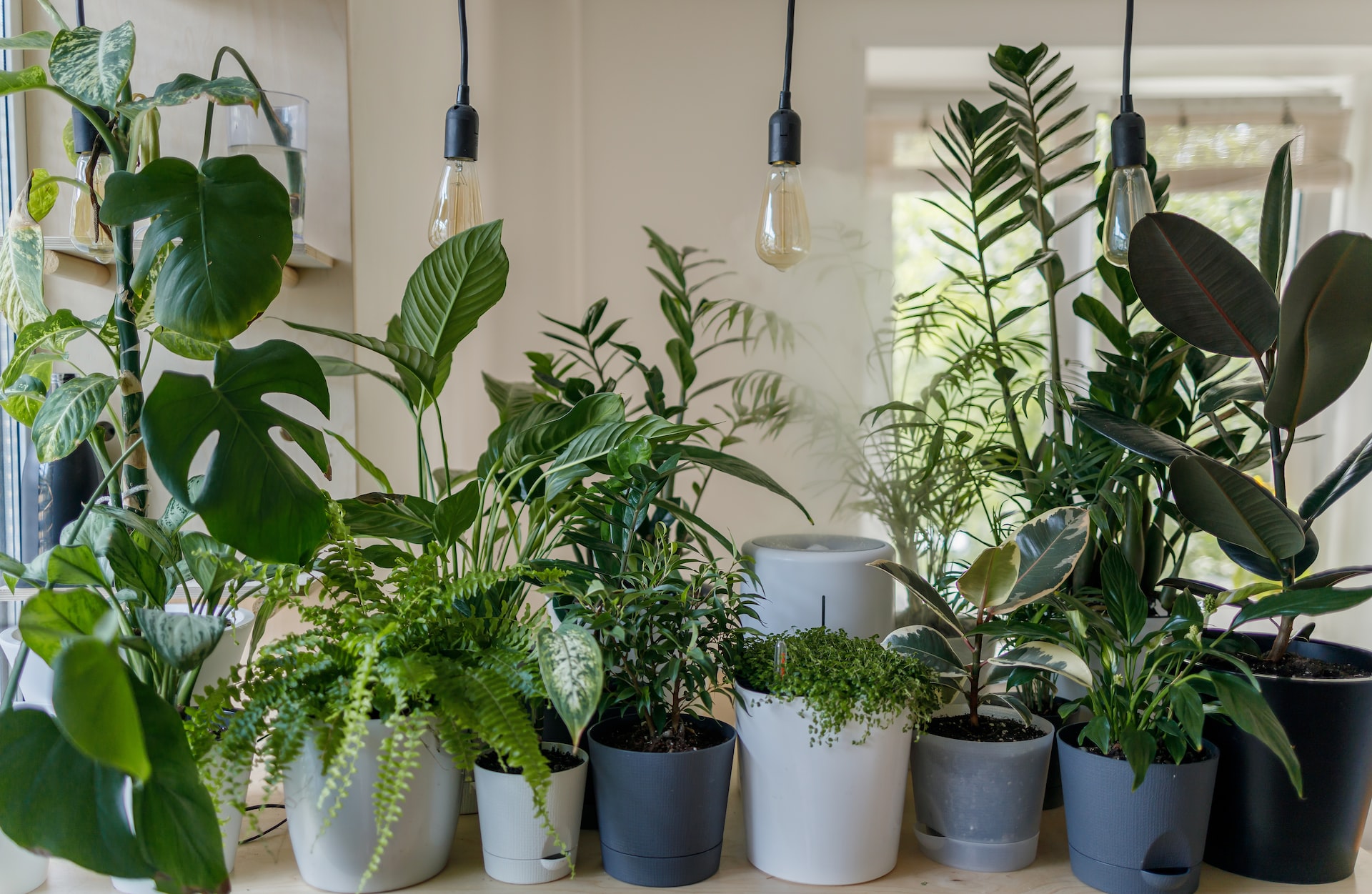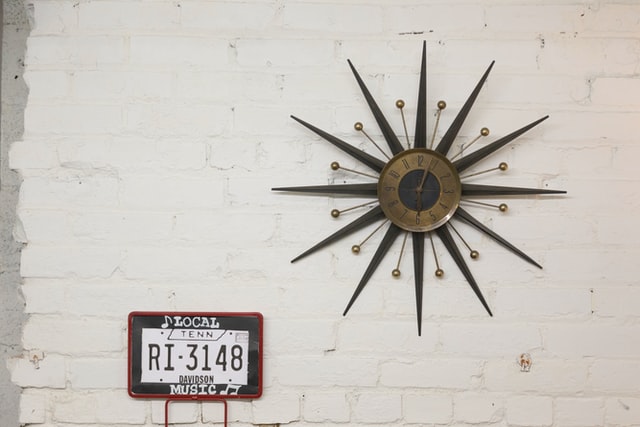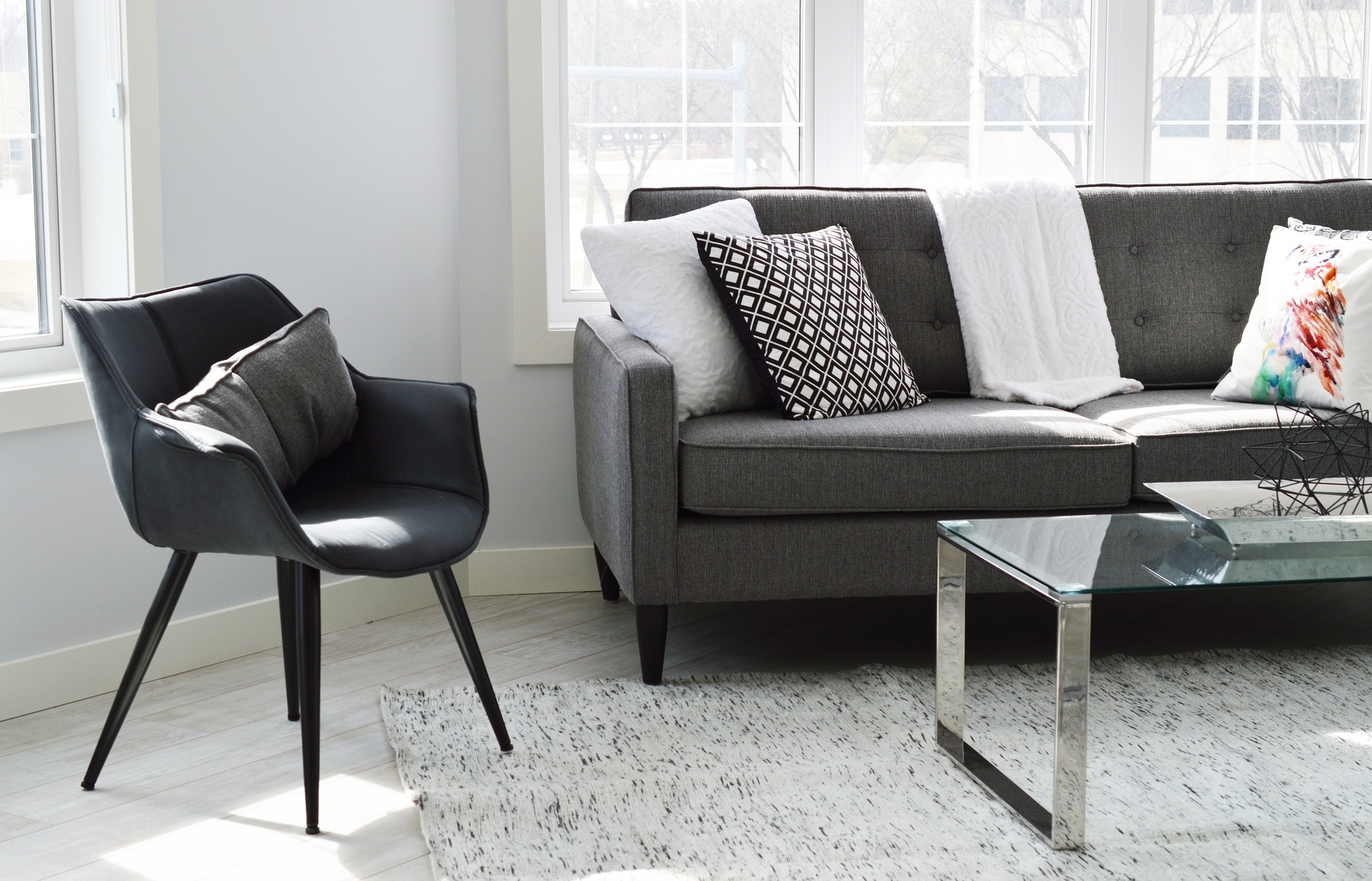Indoor plant care is an extremely rewarding hobby and a great way to bring a beautiful, organic aesthetic to your home. The demand for houseplants is soaring with an increase in popularity over recent years. Many millennials call themselves “plant parents” because they care for various plants from the germination stage to full growth. In one research study, 72% of participants said that having houseplants helped them to feel happier. Not only is having and caring for plants a popular trend, but it’s also a booming business. Houseplant sales are expected to continue growing, with a total global market revenue of approximately $26.23 billion projected by 2029.
Even if you don’t consider yourself to have a green thumb, it’s easy to care for a variety of houseplants once you have the right knowledge. No matter your location or experience level, having indoor plants is a truly rewarding experience. Keeping plants teaches you how to care for another living thing, and an array of houseplants adds a beautiful look to any room.
Selecting the Right Indoor Plants
Choosing the perfect indoor plants for your home is the first and crucial step in creating your green haven. Here’s what you need to consider:
Consider Light Requirements
Indoor plants thrive when they receive the right amount of light. To make the best choice for your space:
- Assess the Natural Light in Your Home: Take note of your living areas’ available natural light sources. Different areas may have varying light intensities and durations throughout the day.
- Determine the Light Preferences of Different Plants: Research and understand the light preferences of the indoor plant species you’re interested in. Some plants thrive in bright, indirect light, while others prefer low-light conditions.
- Match Plant Types with the Available Light Conditions: Choose indoor plants that align with the natural light levels in your home. This ensures your plants receive the optimal amount of light for healthy growth.
Assess Space and Size Constraints
The size and layout of your home play a crucial role in determining the type and number of indoor plants you can accommodate:
- Evaluate the Available Space in Your Home: Measure and assess the space where you plan to place your indoor plants. Consider floor space, windowsills, shelves, and hanging options.
- Choose Plants That Fit Your Space: Opt for plants that fit comfortably within the available space without crowding. Avoid overwhelming small rooms with large plants.
- Consider Vertical Gardening Options for Smaller Spaces: Explore vertical gardening solutions if you have limited floor space. Wall-mounted planters, hanging baskets, and plant shelves can maximize your greenery without compromising space.
Determine Watering Needs
Proper watering for your indoor plant care is essential. To ensure you meet their hydration requirements:
- Understand the Water Requirements of Various Plants: Different indoor plants have distinct water needs. Some prefer consistently moist soil, while others thrive in drier conditions. Research the specific water requirements of your chosen plants.
- Match Your Watering Routine to Your Lifestyle: Consider your daily schedule and routine when choosing plants. If you’re often away from home, select plants that can tolerate occasional neglect or invest in self-watering systems to maintain moisture levels.
- Invest in Self-Watering Systems if Necessary: Self-watering planters and devices can help maintain optimal soil moisture levels and reduce the risk of overwatering or underwatering. These systems can be especially beneficial for busy homeowners.
Evaluate Maintenance Level
When it comes to indoor plant selection, the maintenance level you can provide is a crucial consideration. Start by honestly assessing the time and effort you can dedicate to plant care. Understand that some plants demand more frequent attention than others, so align your choice with your available resources. For those new to indoor gardening or juggling a busy schedule, opting for low-maintenance plant varieties is a wise move, as they’re forgiving of occasional lapses in care. Luckily, there’s a diverse selection of low-maintenance and beginner-friendly options, such as snake plants, pothos, and peace lilies, which thrive with minimal intervention, making them ideal choices for homeowners looking to introduce greenery into their spaces with ease.
Popular Indoor Plant Varieties
To get you started on your indoor plant journey, here are a few popular indoor plant varieties worth considering when you choose houseplant options:
- Snake Plant (Sansevieria): Known for its air-purifying properties, the snake plant is low-maintenance and can tolerate low light conditions.
- Pothos (Epipremnum aureum): Pothos is a versatile and easy-to-care-for plant that comes in various leaf colors and patterns. It’s an excellent choice for beginners.
- Peace Lily (Spathiphyllum): Peace lilies are prized for their elegant white blooms and ability to thrive in low-light environments. They also help improve indoor air quality.
- Spider Plant (Chlorophytum comosum): Spider plants are known for their air-purifying qualities and adaptability to various light conditions. They produce distinctive arching foliage.
- ZZ Plant (Zamioculcas zamiifolia): ZZ plants are hardy and require minimal maintenance. They have glossy, dark green leaves and can tolerate low light.
- Fiddle Leaf Fig (Ficus lyrata): With large, dramatic leaves, the fiddle leaf fig is a striking statement plant that prefers bright, indirect light.
- Aloe Vera: Aloe vera is not only an attractive succulent but also has healing properties for minor burns and skin irritations. It thrives in bright, indirect light.
Each of these indoor plant varieties has its unique charm and care requirements. Consider your preferences, lifestyle, and home environment when selecting the right indoor plants to create your green haven.
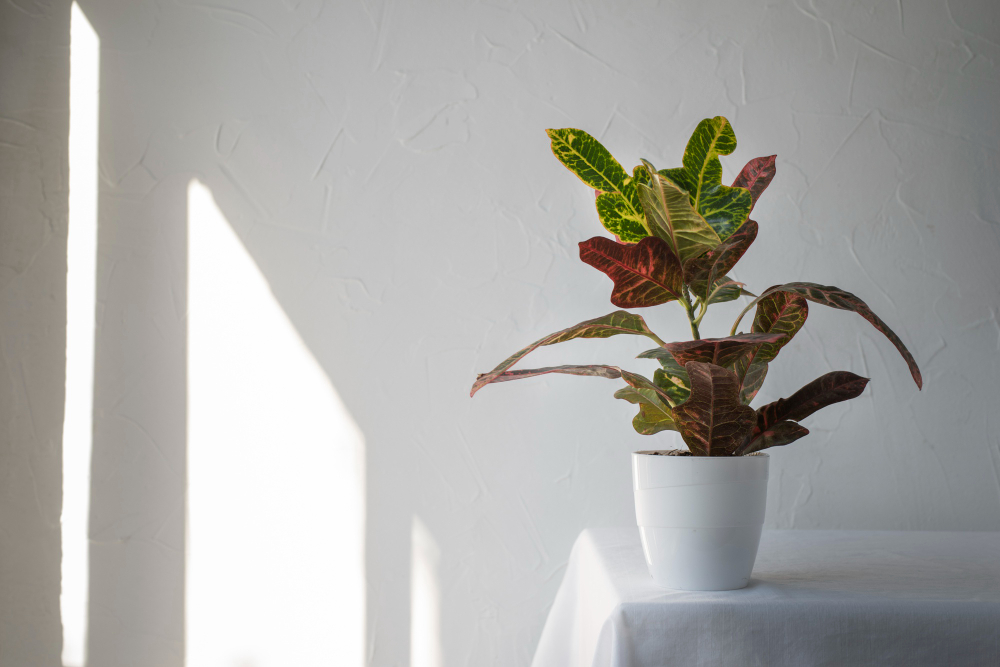
Understanding Light Conditions
Effective management of light conditions is pivotal to the successful growth of indoor plants. Here’s how to navigate this essential aspect of plant care:
Step 1: Differentiate between Low, Medium, and High Light Conditions: Begin by understanding the distinctions between different light levels. Low light conditions typically involve minimal direct sunlight, medium light conditions offer moderate sunlight, and high light conditions entail abundant direct sunlight.
Step 2: Identify the Ideal Locations in Your Home for Each Light Level: Survey your home to determine the various light conditions available. Low-light areas might include corners, while medium light can often be found near windows with filtered sunlight. High-light areas receive direct sunlight for several hours a day.
Step 3: Use Tools Like Light Meters to Measure Light Intensity: For precise assessment of light intensity, consider employing light meters. These handy devices help quantify the amount of light your plants receive, aiding you in selecting the most appropriate species for each location.
Choose the right spot for your indoor plants
- Match Plants with Their Preferred Light Conditions: Research your plant species to identify their specific light requirements. Some thrive in low light, such as snake plants, while others, like succulents, demand bright, direct sunlight.
- Consider Temperature and Humidity Preferences: Alongside light, consider your plants’ temperature and humidity preferences. Some thrive in warmer, more humid conditions, while others prefer cooler, drier atmospheres.
- Create Microenvironments for Diverse Plant Species: You can create microenvironments to accommodate a range of plant species in one space. For example, place a cluster of humidity-loving plants in a bathroom with higher moisture levels while locating succulents on a sunny windowsill nearby.
Consideration for Decor and Aesthetics
Considering decor and aesthetics when incorporating indoor plants into your interior design scheme can infuse charm and vitality into your living spaces. You can seamlessly integrate plants into your design by strategically placing them in empty corners, on shelves, or as captivating table centerpieces. Elevating the aesthetics of your indoor plants is easily achieved by selecting stylish planters and containers that harmonize with your decor; the options are abundant from minimalist ceramic pots to decorative plant stands. Experimenting with various arrangements and groupings allows you to craft visually pleasing displays that combine plants of diverse sizes, shapes, and colors, adding texture and dimension to your living areas.
Watering and Soil Care
Ensuring proper watering and soil care is fundamental to the health and longevity of your indoor plants:
Proper Watering Techniques
Understanding the art of proper watering is essential for your plant’s well-being. Here’s how to achieve it:
- Understand the Signs of Overwatering and Underwatering: Familiarize yourself with the telltale signs of overwatering, such as wilting, yellowing leaves, or waterlogged soil, as well as the symptoms of underwatering, like dry, crispy foliage. Recognizing these signs early allows for timely adjustments to your watering regimen.
- Develop a Watering Schedule: Establish a consistent watering routine tailored to your plant’s specific requirements. Some prefer to slightly dry out between waterings, while others thrive with consistently moist soil. Take into account factors like the season, humidity levels, and the plant’s growth stage when determining the frequency.
- Use the Right Watering Methods for Different Plant Types: Tailor your watering methods to your plant’s needs. Different indoor plants may benefit from distinct watering techniques. Some prefer bottom watering, while others thrive with gentle top watering. Ensure that excess water drains out of the pots to prevent root rot and maintain proper soil aeration.
Choosing the Right Potting Mix
Selecting the appropriate potting mix is critical to maintaining the overall health of your indoor plants. To make the right choice:
Firstly, explore various potting mixes and their benefits. Investigate the diverse options available, considering factors such as drainage and aeration, as different plant species may require distinct soil compositions.
For seasoned plant enthusiasts, consider mixing your potting soil for customized care. This hands-on approach allows you to create a personalized blend tailored to the unique requirements of your indoor plants, ultimately optimizing their growth and overall well-being.
Furthermore, as your indoor plants mature and inevitably outgrow their current containers, it’s essential to repot them into larger pots with fresh soil. This proactive measure prevents root-bound conditions, ensuring that your plants have sufficient space for healthy development and continued flourishing.
Signs of Overwatering and Underwatering
Being able to identify and address signs of overwatering and underwatering is critical for maintaining your indoor plant care:
- Identify and Address These Common Issues: Familiarize yourself with the typical symptoms of overwatering, such as wilting, yellowing leaves, or waterlogged soil, as well as the signs of underwatering, like dry, brittle foliage. Address these issues promptly to prevent further stress on your plants.
- Adjust Your Watering Routine Accordingly: If you notice signs of overwatering or underwatering, adapt your watering routine to better suit your plant’s specific requirements. Keep in mind that each plant type may demand a slightly different approach.
- Utilize Tools Like Moisture Meters: Consider using moisture meters or moisture-testing probes to accurately gauge the soil’s moisture content. These tools provide precise feedback on when it’s time to water or hold off, helping you maintain optimal soil moisture levels.
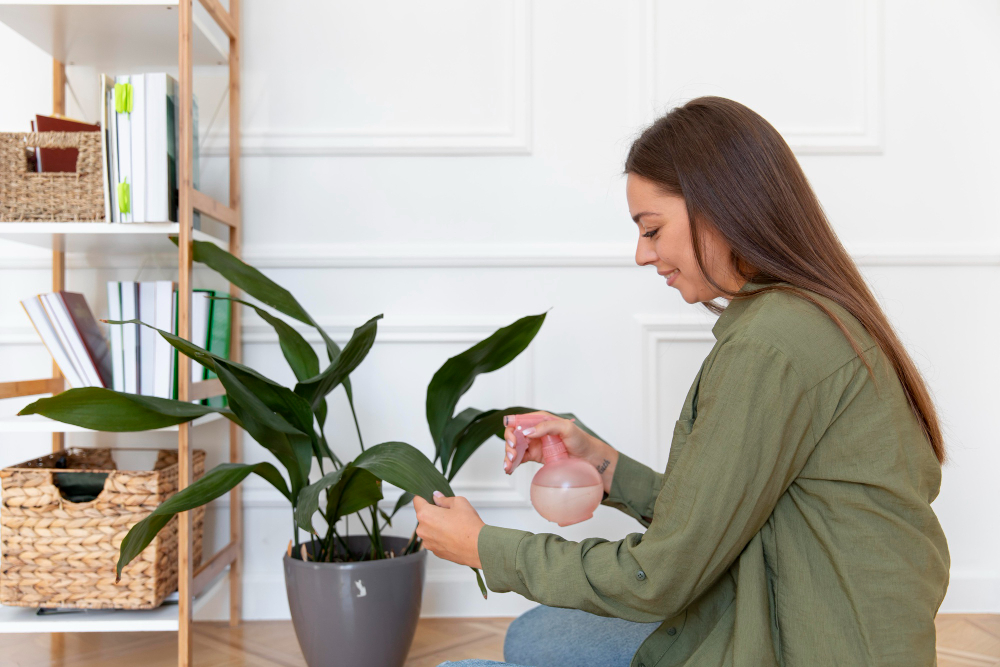
Nutrient Needs of Indoor Plants
To promote the health and vitality of your indoor plants, it’s essential to understand their nutrient requirements. This involves familiarizing yourself with the fundamental nutrients necessary for plant growth, including macronutrients such as nitrogen (N), phosphorus (P), and potassium (K), as well as micronutrients like iron (Fe), manganese (Mn), and zinc (Zn). Additionally, recognizing the distinction between macronutrients, which plants require in larger quantities, and micronutrients, which they need in smaller amounts, is crucial for maintaining proper nutrient balance and overall plant health. Stay vigilant for signs of nutrient deficiencies in your plants, such as yellowing leaves, stunted growth, or poor flowering, as these symptoms can indicate specific nutrient deficits that require prompt attention.
Types of Fertilizers
There are various fertilizer options available, each with its characteristics and benefits:
Explore Various Fertilizer Options, Including Organic and Synthetic: Research and select suitable fertilizers for your indoor plants. You can choose between organic fertilizers, which are derived from natural sources, and synthetic fertilizers, which are chemically formulated. Both have their advantages and can be effective when used correctly.
Follow Recommended Application Rates and Schedules: Adhere to the recommended application rates and schedules provided on the fertilizer packaging. Over-fertilization can harm your plants, so it’s crucial to apply fertilizers as directed.
Consider Slow-Release Fertilizers for Convenience: Slow-release fertilizers can provide a convenient and consistent nutrient supply to your plants over an extended period. These are particularly useful for busy homeowners or those who want to simplify their fertilization routine.
The Role of HVAC in Plant Health
HVAC plays a crucial role in ensuring the health and well-being of your indoor plants. This includes maintaining optimal temperature levels to keep your plants comfortable, controlling humidity to prevent issues like mold and drying, and ensuring proper air circulation and ventilation for adequate oxygen exchange. To achieve this, it’s essential to understand the temperature preferences of your specific indoor plants and utilize HVAC settings accordingly. Humidifiers and dehumidifiers can be valuable tools in adjusting humidity levels as needed.
Proper ventilation is vital to ensure adequate airflow around your plants while avoiding drafts and extreme temperature fluctuations. Strategically using fans and vents can help achieve this balance. Additionally, it’s essential to consider the warranty for your HVAC system, including warranty information, coverage, duration, maintenance requirements, and the claim process. Lastly, Seasonal Care ensures that your indoor plants thrive year-round.
Adjusting Care Routine for Seasons
Adapting your care routine to the changing seasons is paramount for the continued well-being of your indoor plants. To navigate these seasonal transitions effectively, there are key considerations to keep in mind: Firstly, recognizing how seasonal changes impact your plants is essential. Be mindful of shifts in temperature, humidity, and light levels that can influence their growth and overall health.
Secondly, modifying your watering, fertilizing, and lighting routines is crucial in response to these seasonal fluctuations. This may entail adjusting the frequency of watering, fine-tuning fertilization schedules, and repositioning your plants to ensure they receive the appropriate amount of light for their needs.
Lastly, preparation is key if you intend to move your plants outdoors during the warmer months. Gradually acclimating your indoor plants to the outdoor environment helps them adapt smoothly and avoid potential shock, ensuring their continued vitality throughout the changing seasons.
Winter Care Tips
During the winter months, your indoor plants may face specific challenges. We recommend addressing lower light levels and drier indoor air resulting from reduced sunlight and indoor heating to ensure their well-being. Your plants may experience lower light levels and drier air. Consider moving them closer to windows and employing humidifiers to maintain adequate moisture levels. Additionally, make sure to keep them protected from frost by avoiding placement near drafty windows or heating vents, as these conditions can stress your plants.
Preparing for Spring and Summer
As spring and summer approach, it’s time to transition your plants outdoors for increased sunlight and fresh air. Here’s how to prepare for this seasonal change: Gradually move your indoor plants outdoors to benefit from the abundant sunlight. Start by placing them in a partially shaded area and gradually expose them to more direct sunlight to prevent sunburn.
Additionally, you will need to monitor outdoor conditions to avoid shock: Keep a close watch on outdoor conditions, including temperature and moisture levels, to ensure your plants adapt smoothly to their new environment. Gradual acclimatization is key to preventing shock.
Troubleshooting Common Issues
Despite your best efforts in indoor plant care, you may still encounter challenges along the way. Here’s how to troubleshoot some common issues:
Yellowing Leaves
Yellowing leaves can be a sign of various underlying problems. To address this issue, understand the potential causes by Investigating the potential causes such as overwatering, underwatering, or nutrient deficiencies. Identifying the root cause is crucial for effective treatment. Once you’ve identified the cause, take appropriate corrective actions. This may involve adjusting your watering routine, addressing nutrient deficiencies with the right fertilization, or repotting the plant if the root system is compromised.
Wilting Plants
Wilting plants can result from both overwatering and underwatering. To determine the cause and address it by determining whether the plant is overwatered or underwatered, assess the moisture levels in the soil and the plant’s root health to determine if it’s receiving too much or too little water.
You will need to adjust Your watering routine and soil conditions as well. Based on your assessment, adjust your watering routine and soil conditions accordingly. Ensure the plant receives the right amount of water for its specific needs.
Dropping Leaves
Dropping leaves can be a response to various stressors. To address this issue, investigate potential causes: Investigate potential causes of leaf drop, such as environmental stress, pest infestations, or improper care. Once you’ve identified the underlying problem, take appropriate steps to address it. This may involve adjusting environmental conditions, implementing pest control measures, or improving overall plant care. Prune away dead or damaged leaves and maintain the plant’s health to encourage new growth. Adequate care and attention can help the plant recover and produce healthy foliage.
Stunted Growth
Stunted growth can result from various factors. To address this issue. Evaluate the plant’s access to light, its watering regimen, and nutrient availability. Identify any deficiencies or imbalances that may be inhibiting growth. Based on your assessment, adjust your care routines to promote healthier growth. This may include providing more appropriate lighting conditions, optimizing watering practices, and addressing nutrient deficiencies through fertilization. Stunted plants may take time to recover and resume healthy growth. Be patient and continue providing proper care to support their rehabilitation.

As a homeowner, nurturing indoor plants is not just about beautifying your space; it’s about creating a living, breathing oasis that enhances your well-being and quality of life. With the knowledge and guidance provided in this comprehensive guide, you’re well-equipped to embark on your indoor plant journey. Cultivate your green haven, and watch as your home transforms into a vibrant, serene retreat filled with the wonders of nature.
